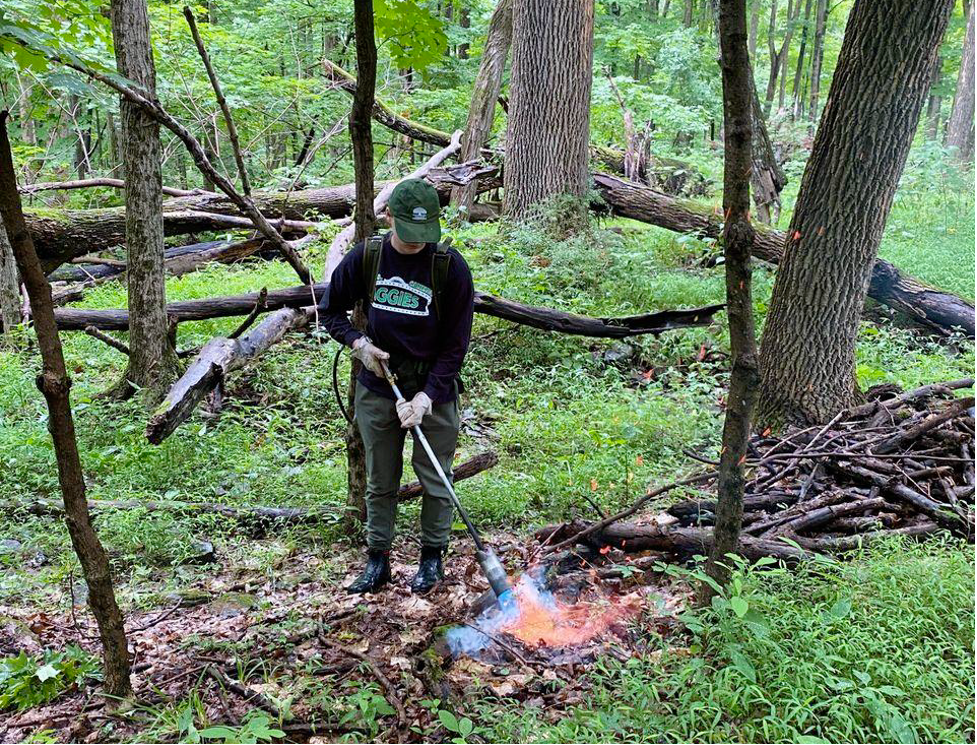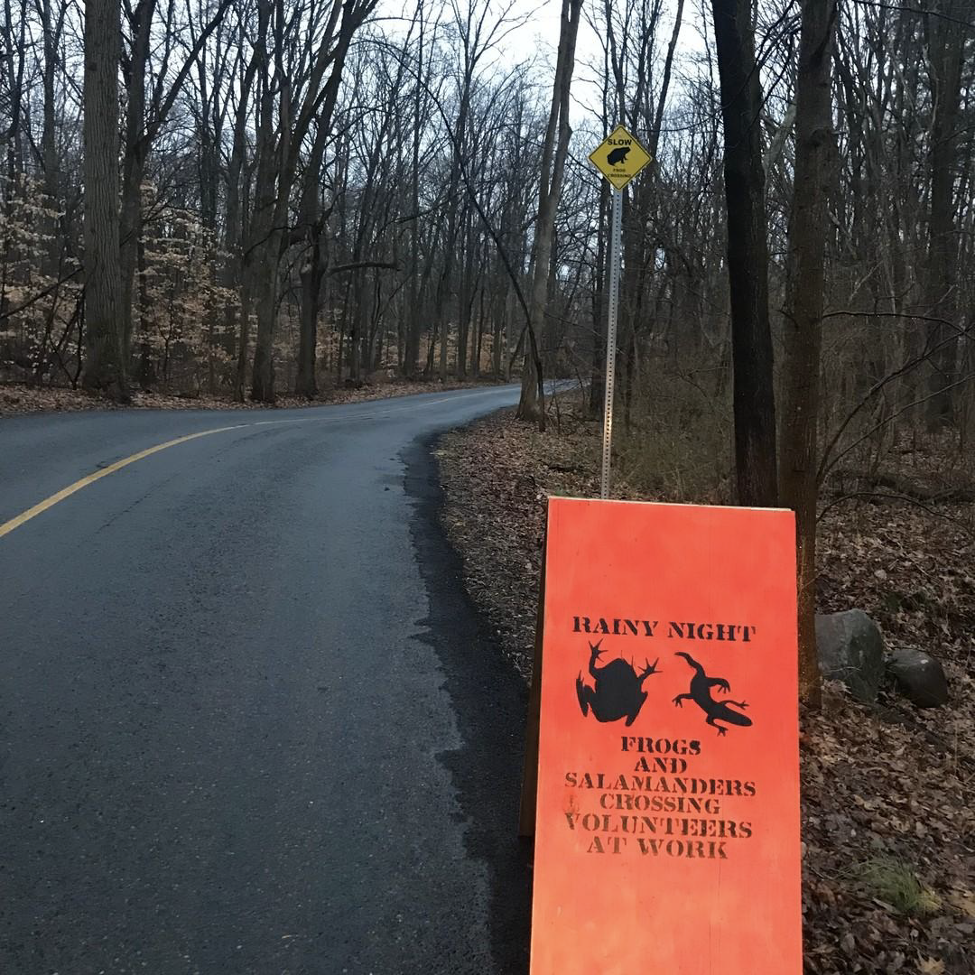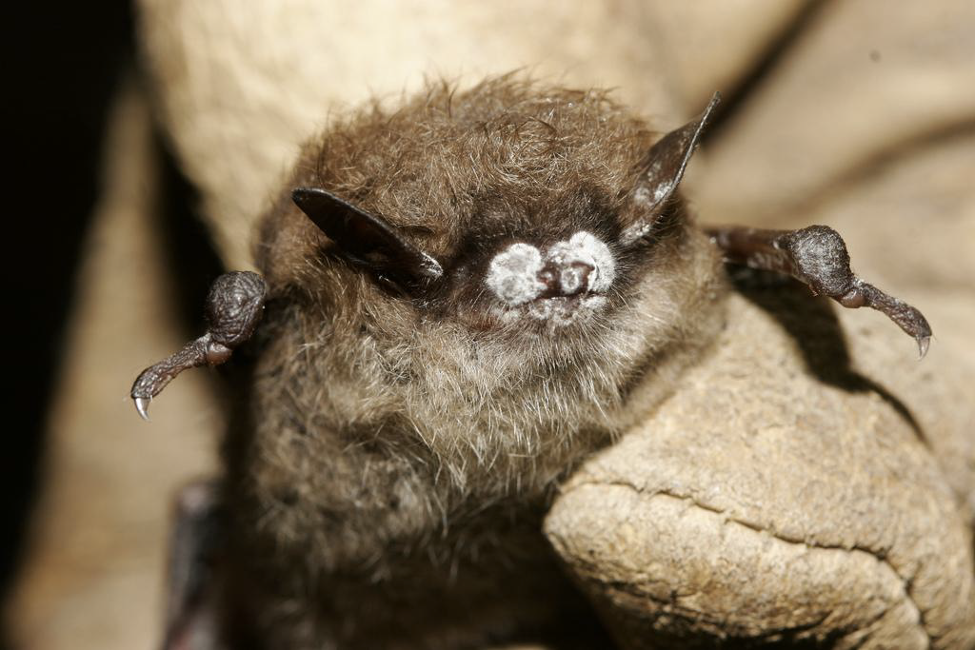Shown: Little brown bat (endangered species). One helpful action that can be taken to support this species is adding a bat box to your property, which encourages them to return for years to come!
INTRO
Our region is home to many threatened and endangered species, which means that we all have a responsibility to help protect them. For #NationalEndangeredSpeciesDay, we would like to share the work that our stewardship team does, as well as some tips for how you can help too.
INVASIVE PLANT MANAGEMENT
Invasive plant management is one of the most important tools our staff uses to assist threatened species. When dealing with plants, they carefully clear invasive species from the area, generally working most vigorously when the plant is dormant. This prevents the invasive species from outcompeting and killing the last of the threatened plants. Invasive plant management is equally important when working with listed animal species, due to many relying on insects as a food source. Insects often have a close relationship with certain plants, and when the majority of available plants are invasive, insect biodiversity cannot be supported.

Shown: A backpack torch being used to control Japanese Barberry (invasive species). This work must be done carefully, but it is an important tool in our stewardship toolbelt! One of the biggest benefits of this practice is that spot-burning can be applied to a single plant or a small population of plants with little to no disturbance to the surrounding vegetation.
DEER POPULATION MANAGEMENT
In tandem with invasive plant management is deer population management. If you have an overly abundant deer population, like we do in Bucks County, they will focus their feeding on native plants, thereby suppressing them to the point where many forests are unable to regenerate for decades. Depending on how palatable the species is, many non-woody plants have become uncommon, rare, and even state listed.
AMPHIBIAN CROSSINGS & MORE
Our team diligently works to create the best possible habitat for listed animal species, including adding nesting boxes for birds, helping amphibians migrate during our amphibian crossing program, and helping the forest to regenerate. For local amphibians and other species that do not migrate as easily as birds, even a single road going through a sensitive habitat can threaten their existence. This is one reason why our amphibian crossing program is so vital to keeping these vulnerable populations alive. On warm, rainy evenings in early spring, a mass migration of frogs, toads, and salamanders can be observed as they move to vernal pools to lay their eggs. During our amphibian crossing program, Heritage Conservancy staff and volunteers lend a helping hand and aid members of these vulnerable populations across the road safely, saving many lives.

Shown: A warning sign to oncoming drivers during our amphibian crossings. Whether you see our signs or not, remember to drive slowly and carefully on migration nights!
WHAT YOU CAN DO
We encourage everyone to take steps to support locally threatened species. We can all do our part to limit disturbance near sensitive areas. Most wildlife need areas where they won’t be forced to flee or hide, but are comfortable. These areas are generally thick with vegetation and have other resources nearby.
Further, try to manage invasive species and plant native trees and shrubs to help create a favorable wildlife habitat on your land. We understand that this is not an option for all, but if you would still like to participate in these efforts, consider volunteering for one of our programs! Learn more at https://heritageconservancy.org/get-involved/give-your-time/
Grace Nicholas, Marketing & Communications Associate
